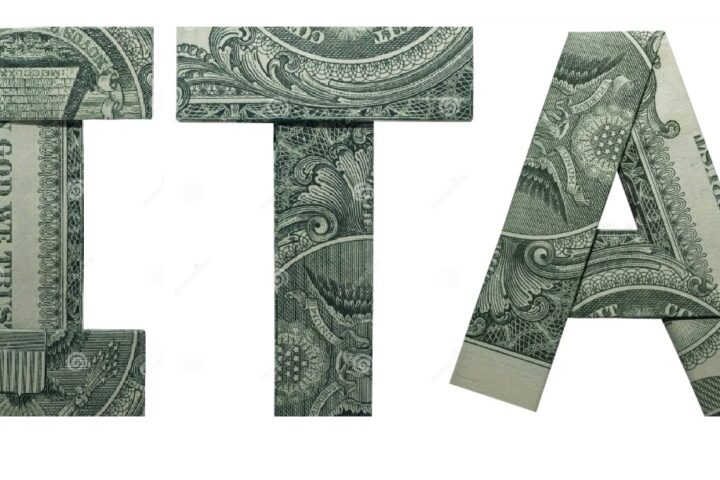IRS Tax Audit? Avoid Accuracy-Related Penalties
If the IRS audits you and says you owe more tax, they will often impose an accuracy-related penalty on top of the tax.
This penalty is not small – at 20 percent of the additional tax owed. For a $10,000 audit assessment, that’s an additional $2,000 you have to send to Uncle Sam. In this blog post, we discuss when an accuracy-related penalty might apply and how you can potentially save yourself thousands of dollars by avoiding the penalty using one of three different strategies.
How the IRS Imposes the Accuracy-Related Penalty
There are several bases on which the IRS can impose an accuracy-related penalty. The two most common are:
1. Negligence or disregard of rules and regulations. Negligence is the failure to make a reasonable attempt to comply with the tax laws and/or exercise ordinary and reasonable care in the preparation of a tax return. Disregard is a careless, reckless, or intentional disregard of the tax law.
2. Substantial understatement of income tax. For the accuracy penalty on the substantial underpayment of tax, the underpayment amount is the amount of tax that should have been on the return less the amount of tax actually shown on the return. For the accuracy penalty on the understatement to apply, that understatement has to exceed the relevant threshold below:
- For individual taxpayers, there is a substantial understatement of income tax for any taxable
year if the amount of the understatement for the taxable year exceeds the higher of (a) 10
percent of the tax required to be shown on the return for the taxable year or (b) $5,000. - For C corporations (which aren’t personal holding companies), the lesser of (a) 10 percent of
the tax that should have been on the return (but no less than $10,000) or (b) $10 million.
Example. John files his Form 1040 showing a total tax of $6,000. The IRS audits his return
and proposes an additional $4,000 of tax, for a total tax of $10,000. - No penalty. The greater of 10 percent of the $10,000 required tax ($1,000) or $5,000 is
$5,000. The understatement of $4,000 is less than $5,000 (the greater amount), so John
does not have an accuracy penalty due to a substantial underpayment of tax.
Note: John may still have to pay a 20 percent penalty if the IRS proves negligence or disregard of rules and regulations. The substantial understatement is just one of the two possible accuracy penalties we are discussing in this article.
Beating the Accuracy-Related IRS Penalty
If an IRS examiner proposes an accuracy-related penalty, or if you want to request an abatement of a penalty already assessed, you may qualify to beat the penalty.
In general, the IRS can’t impose a penalty if there was a reasonable cause for the understatement of tax and you acted in good faith. Below are three specific strategies that you can use to defeat the IRS if it attempts to impose an accuracy-related penalty on you.
Strategy 1: Reliance on a Tax Advisor
You hired a tax professional to prepare your tax returns, but now you’ve received an audit bill. Luckily, reliance on a tax advisor can be reasonable cause to escape an accuracy-related penalty. But just using a tax professional doesn’t cut it—it’s more complicated. The Tax Court has a three-pronged test to determine whether reliance on a tax advisor constitutes
reasonable cause. The taxpayer must prove the following by a preponderance of the evidence (i.e., more likely than not):
-The advisor was competent, with sufficient expertise to justify reliance.
-The taxpayer provided necessary and accurate information to the advisor.
-The taxpayer actually relied in good faith on the advisor’s judgment.
Strategy 2: Disclosed Position and Reasonable Basis
This is a proactive strategy. If you know a position on your tax return has a high risk of examination and/or is a large dollar amount, you can take actions in advance to prevent the imposition of a penalty due to understatement of tax. First, the tax return must adequately disclose the position. In general, this requires that the return have a properly completed Form 8275 (Disclosure Statement) or Form 8275-R (Regulation Disclosure Statement). Second, the position has to have a reasonable basis in the law. Reasonable basis is more than being “not frivolous,” “not improper,” or “merely arguable;” it has to be reasonably rooted in relevant tax authority.
Strategy 3: Substantial Authority
If you can show there was substantial authority for a position that led to an understatement of tax, then the IRS cannot penalize you on that understatement. Substantial authority is less stringent than preponderance of the evidence (more than 50 percent likelihood of the position being upheld) but higher than the reasonable basis standard described above. The IRS outlines the types of authority considered to be substantial authority, including, for example:
-applicable provisions of the Internal Revenue Code and other statutory provisions;
-proposed, temporary, and final regulations interpreting such statutes;
-revenue rulings and revenue procedures;
-tax treaties and regulations thereunder, and Treasury Department and other official explanations of such treaties;
-court cases;
-congressional intent as reflected in committee reports;
– joint explanatory statements of managers included in conference committee reports, and floor statements made prior to enactment by one of a bill’s managers;
-General Explanations of tax legislation prepared by the Joint Committee on Taxation (the BlueBook);
-private letter rulings and technical advice memoranda issued after October 31, 1976;
-actions on decisions and general counsel memoranda issued after March 12, 1981 (as well as general counsel memoranda published in pre-1955 volumes of the Cumulative Bulletin);
– IRS information or press releases; and notices, announcements, and other administrative pronouncements published by the IRS in the Internal Revenue Bulletin. You can also use the authorities above in a reasonable basis determination.
IRS Civil Fraud Penalty
The IRS can impose a civil fraud penalty of 75 percent if the IRS asserts that the understatement of tax on a return was due to fraud. That is enough to almost double what you owe! Besides the hit on your wallet, there are several other reasons you don’t want the IRS to consider a civil fraud penalty:
-There is no statute of limitations on assessment for a fraudulent return.
– The tax on a fraudulent return cannot be discharged in a bankruptcy proceeding.
– IRS examiners can refer returns with indicators of fraud to the Criminal Investigation Division for possible criminal prosecution.
To impose a civil fraud penalty, the IRS has to prove fraud by clear and convincing evidence, which is a higher standard than a preponderance of the evidence. The IRS and courts look to see whether “badges of fraud” are present and to what extent. Some examples are:
-Understatement of income
-Fictitious or improper deductions
-Accounting irregularities (e.g., two sets of books)
-Obstructive actions by the taxpayer (e.g., false statements, record destruction)
-Engaging in illegal activities or attempting to conceal the same
If you think you are at risk for a civil fraud penalty, then you need to consult Ken-Mar Tax or an experienced tax attorney immediately.
Already Paid an Accuracy-Related IRS Penalty?
If you are reading this blog post and wishing you had contested a prior accuracy-related penalty, it’s not
too late! Provided that the penalty was not part of a closing agreement or in a Tax Court decision, you can file IRS Form 843 to request a “first-time abatement”. If you already paid the penalty, you can get a refund of the penalty payment if you submit the abatement request within two years of the date you paid the penalty.
Cleveland Tax Advisor:
If you have questions about IRS back taxes, IRS Civil Fraud Penalties or Accuracy Related Penalties, contact Enrolled Agent Ken Weinberg of Ken-Mar Tax to set up a free consultation and discuss your tax resolution situation.
Contact Us
If you’ve been frustrated dealing with the IRS, or you just don’t want to deal with the IRS, contact Ken Weinberg to explain your situation and find out what Ken-Mar Tax would charge to handle your situation and avoid dealing with the IRS all together.
- If you have back taxes and want to know the timeline and/or costs to get your back taxes resolved
- If you own a small business and want to discuss tax reduction strategies for the self-employed
- If you’re worried your last tax expert wasn’t doing the best they could have and want a second opinion…
Contact Ken Weinberg to set up a free consultation by filling out the form on this page.




